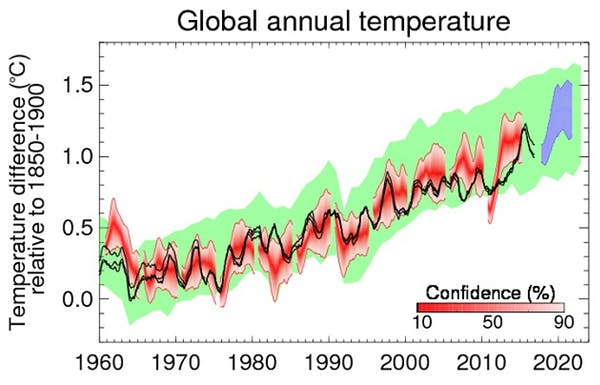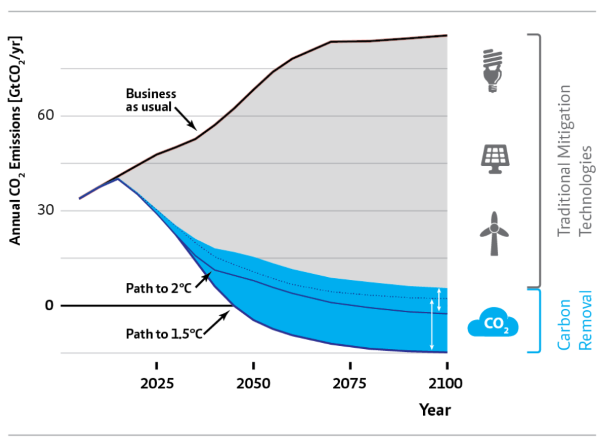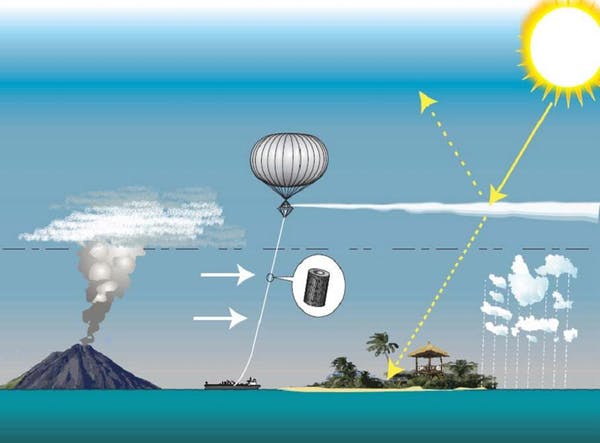COP24: Here’s What Must Be Agreed to Keep Warming at 1.5°C
SPOTLIGHT, UNITED NATIONS, ENVIRONMENT, 10 Dec 2018
3 Dec 2018 – The Paris Agreement of 2015 has a central aim to keep global temperature rise this century well below 2°C above pre-industrial levels and to “pursue efforts” to limit the temperature increase even further to 1.5°C. This is an ambitious aim – global temperatures are rapidly approaching the 1.5°C target and the 2°C limit is not far away.
The path to 1.5°C requires that the world achieve zero emissions before 2050. It is imperative, therefore, that we stop burning fossil fuels, known as mitigation. However, our present trajectory suggests we’re not on track. COP24 can’t take its eye off this ball –- there is no long-term plan that doesn’t include zero fossil-carbon emissions. The scientific consensus is that we need to reach “net zero” CO₂ emissions by 2050. But to tack closer to a scenario of 1.5°C warming, COP24 should set this target for 2035.

Black, observed temperatures; blue, probable range from decadal forecasts; red, retrospective forecasts; green, climate simulations of the 20th century.
The Met Office
Carbon removal and non-CO₂ emissions
The United Nations, in the IPCC Special Report on Global Warming of 1.5ºC has accepted that there isn’t any obvious pathway to zero emissions in such a short time frame, so they have pegged their hopes on NETs – Negative Emissions Technologies. These approaches include carbon capture and storage (CCS), which involves sucking CO₂ from the air and storing it deep underground.
Carbon removal along these lines is the second imperative for COP24 in Katowice. Globally we emit around 40 billion tonnes of CO₂ annually, so net zero CO₂ by 2050 will require CO₂ removal of this scale, starting immediately.
But CO₂ isn’t the only problem. We emit other greenhouse gases such as methane, nitrous oxide and chlorofluorocarbons (CFCs) which all contribute to climate change. Methane is on the rise and is 84 times more potent as a greenhouse gas than CO₂.
It comes from cows, and it leaks from oil wells and coal mines as “fugitive methane”. It is also seeping out of the melting permafrost in the Arctic. This is a worrying form of “positive feedback” where global warming causes the further release of gases that cause further warming.
Nitrous Oxide, which is 300 times more potent than CO₂, is rising too, caused by modern agriculture. And the concentration of refrigerant gases, such as CFCs, which are thousands of times more potent than CO₂, is not falling as fast as we’d hoped. So COP24 has a third imperative, to prevent the rise of non-CO₂ greenhouse gases. If we can stabilise non-CO₂ greenhouse emissions at present day levels we’ll be doing well, but concentrations are rising fast.

Limiting warming to 1.5°C or 2°C requires mitigation (energy efficiency and renewable generation) and CO₂ removal. MCC
Desperate times, desperate measures
All of this is going to be hard work. We’re failing to cut down our emissions, the technologies for NETs don’t exist at any meaningful scale, yet and there are no political drivers in place to enforce their deployment. There is also a real risk of a dramatic rise in methane in the near future. COP24 will have to consider emergency plans.
One such plan is very controversial. There are so-called “geoengineering” technologies which can be used to cause changes in global temperatures. One of these is Solar Radiation Management (SRM), which involves injecting tiny aerosol particles high in the atmosphere where they reflect sunlight into space.
We know from the eruption of Mount Pinatubo in 1991 that stratospheric aerosols caused a cooling of around 1°C over a year. The northern winter of 1992 saw a dramatic increase in sea ice and a stalling of glacial melting. SRM technologies exist and the first sun-dimming experiments are underway.

A proposed SRM technique which would inject sulphate aerosols into the atmosphere. Hugh Hunt/Wikimedia Commons, CC BY-SA
There is a realistic possibility that deploying SRM can buy us some time to enact the essential measures needed to stop warming at or before 1.5°C. The discussions at COP24 must keep all options on the table, and as unpalatable as geoengineering technologies might seem, their deployment may prove to be unavoidable.
The indicators are all in the danger zone. We are seeing increasing Arctic temperatures, rapid loss of Arctic sea ice, reduced Arctic reflectivity, rapidly melting ice shelves and methane release from permafrost. These are leading to rapidly rising sea levels, coastal flooding and storm surges, increased hurricane and storm activity, dry and hot conditions conducive to wildfires, and drought and crop failure.
The urgency for decisive action is the imperative for COP24. The UN must press on with four major strands for meeting the Paris 1.5°C target:
- Reduce fossil carbon emissions.
- Remove carbon from the atmosphere (NETs).
- Halt the rise of emissions of non-CO₂ greenhouses cases (Methane, Nitrous oxide, CFCs).
- Investigate techniques for geoengineering, including Solar Radiation Management.
All four of these must proceed simultaneously and in parallel. COP24 must make this perfectly clear. There is utmost urgency and no time to “wait and see”.
_________________________________________
Hugh Hunt – Reader in Engineering Dynamics and Vibration, University of Cambridge
Republish our articles for free, online or in print, under Creative Commons license.
Go to Original – theconversation.com
DISCLAIMER: The statements, views and opinions expressed in pieces republished here are solely those of the authors and do not necessarily represent those of TMS. In accordance with title 17 U.S.C. section 107, this material is distributed without profit to those who have expressed a prior interest in receiving the included information for research and educational purposes. TMS has no affiliation whatsoever with the originator of this article nor is TMS endorsed or sponsored by the originator. “GO TO ORIGINAL” links are provided as a convenience to our readers and allow for verification of authenticity. However, as originating pages are often updated by their originating host sites, the versions posted may not match the versions our readers view when clicking the “GO TO ORIGINAL” links. This site contains copyrighted material the use of which has not always been specifically authorized by the copyright owner. We are making such material available in our efforts to advance understanding of environmental, political, human rights, economic, democracy, scientific, and social justice issues, etc. We believe this constitutes a ‘fair use’ of any such copyrighted material as provided for in section 107 of the US Copyright Law. In accordance with Title 17 U.S.C. Section 107, the material on this site is distributed without profit to those who have expressed a prior interest in receiving the included information for research and educational purposes. For more information go to: http://www.law.cornell.edu/uscode/17/107.shtml. If you wish to use copyrighted material from this site for purposes of your own that go beyond ‘fair use’, you must obtain permission from the copyright owner.
Read more
Click here to go to the current weekly digest or pick another article:
SPOTLIGHT:
- Trigger-Happy States and the Death of Diplomacy
- How U.S. & Israel Used Rafael Grossi to Hijack the IAEA and Start a War on Iran
- The Prevention of Literature
UNITED NATIONS:
- UN Says 613 Gaza Killings Recorded at Food Distribution Sites Near Humanitarian Convoys
- ‘Our Kids Cry for Food’: Most Gaza Families Survive on One Meal a Day
- UN Chief ‘Gravely Alarmed’ by US Bombing of Iranian Nuclear Sites
ENVIRONMENT:

